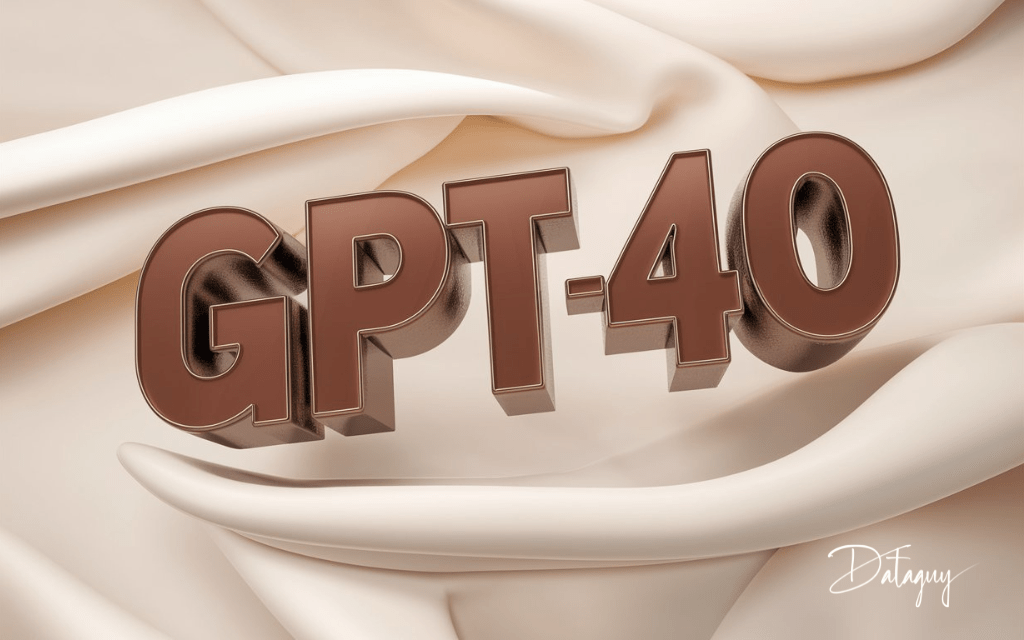Last updated on May 20th, 2024 at 06:34 pm
Insights Index
ToggleGPT-4o: Transforming Human-Computer Interaction
GPT-4o, the latest innovation in AI, represents a paradigm shift in human-computer interaction. By accepting diverse inputs and generating outputs across multiple modalities, including text, audio, and image, GPT-4o offers a revolutionary approach to data processing and understanding.
It represents a significant leap forward in AI technology, offering lightning-fast response times, multilingual proficiency, and advanced safety features. Explore its transformative capabilities in reshaping human-computer interaction.

Unlike its predecessors, GPT-4o responds to audio inputs with remarkable speed, akin to human conversational pace. With an average response time of just 320 milliseconds, it rivals human interaction time, setting a new standard in AI responsiveness.
Before GPT-4o, Voice Mode relied on a multi-step process involving separate models for audio transcription and generation. However, with GPT-4o, a single unified model handles all modalities, ensuring a richer and more nuanced understanding of inputs and outputs.
Powered by cutting-edge deep learning techniques, GPT-4o excels across various benchmarks, matching GPT-4 Turbo’s performance on text and code while surpassing it in multilingual, audio, and vision tasks. Its built-in safety mechanisms and rigorous evaluations mitigate risks, ensuring responsible AI usage across different domains.
GPT-4o’s, rollout marks a significant milestone in AI accessibility. Available in both ChatGPT and API, it offers faster processing, lower costs, and higher message limits compared to its predecessors.
Developers can leverage its capabilities to create innovative applications, with support for audio and video modalities.
Credit: Demo Video by OpenAI | Real-time demonstration showcasing GPT-4o’s translation capabilities
Credit: Demo Video by OpenAI | Math problems with GPT-4o
Credit: Demo Video by OpenAI | Rock, Paper, Scissors with GPT-4o
To use GPT-4o, follow these steps:
- Access the Model: Use it via ChatGPT (including in the free tier and ChatGPT Plus), the OpenAI Playground, or the API for developers.
- Provide Inputs: It accepts text, audio, image, and video inputs.
- Generate Outputs: It can produce text, audio, and image outputs.
- Integration: Use it for tasks like content creation, customer service, real-time translation, and more.
- Safety and Limitations: Be aware of built-in safety measures and current limitations.
Tasks that can be accomplished using GPT-4o:
- 1. Text Understanding and Generation: Like previous models, GPT-4o excels at understanding and generating text, providing high-quality responses to a wide range of prompts.
2. Image Analysis: GPT-4o can interpret and discuss images. For instance, it can translate a picture of a menu in a different language, explain the history and significance of the food items, and give recommendations.
3. Video Analysis (without audio): The model supports understanding video content by analyzing frames extracted from the video. This allows for tasks such as summarizing video content or providing insights based on visual data.
4. Data Analysis and Visualization: GPT-4o can analyze data and create charts, making it useful for tasks that involve data interpretation and presentation.
5. File Uploads for Assistance: Users can upload files to GPT-4o for summarizing, writing, or analyzing content, enhancing its utility in various professional and academic settings.
6. Multimodal Capabilities: While audio support is expected to be available soon, GPT-4o currently supports text and image inputs and can provide text outputs.
7. Chat about Photos: Users can have conversations about photos they take, allowing for a more interactive and informative discussion about visual content .
8. Enhanced Language Capabilities: The model supports over 50 languages, improving accessibility and usability for a global audience.
9. Integration with ChatGPT: GPT-4o is integrated into the ChatGPT platform, providing advanced features to free, Plus, Team, and Enterprise users, with varying limits based on the subscription tier.
10. Use of GPTs and GPT Store: Users can discover and utilize different GPTs from the GPT Store, enhancing their interactions with customized AI tools.
11. Memory Feature: This feature allows for building more helpful and personalized experiences by remembering user interactions and preferences.
For detailed information, visit these links: GPT-4 Research | OpenAI Developer Forum | OpenAI
Summary of GPT-4o from OpenAI:
GPT-4o is OpenAI’s advanced model, designed for seamless human-computer interaction across text, audio, image, and video. It offers:
- #1. Multimodal Input and Output: Accepts and generates text, audio, and images.
#2. Performance: Matches GPT-4 Turbo in English text and code, improves non-English text, vision, and audio understanding, while being faster and cheaper.
#3. Real-Time Capabilities: Quick response times for audio inputs.
#4. Integrated Model: Processes all modalities in a single network for richer, more nuanced interactions.
#5. Applications: Enhanced customer service, real-time translation, and more.
#6. Safety: Built-in safety measures and external evaluations to mitigate risks.
CONCLUSION: GPT-4o, short for “omni,” is an advanced AI model that integrates text, audio, image, and video inputs, and generates text, audio, and image outputs. It processes multimodal inputs through a single neural network, achieving rapid response times similar to human conversation.
GPT-4o matches GPT-4 Turbo in text and coding performance, excels in non-English languages, and significantly improves vision and audio understanding. It is faster and 50% cheaper in the API, emphasizing safety with built-in mitigations and extensive evaluations to manage risks across all modalities.



